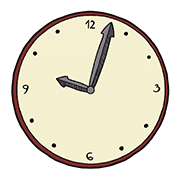It is a succession, or a skill to determine the exact steps on how to perform a certain activity without forgetting anything.
It is used, for example, when laying down the work sequence or a process of resolving of a certain task. If we want to describe to someone how we do something, we must use seriality. Likewise, seriality will reflect in our precise work, when we don’t forget anything, complete all the operations and don’t miss anything important. We can talk about visual seriality when we need to know the order or to describe a sequence of information that we see. Or sometimes we use the term auditory seriality for hearing and capturing the process someone talks about. Often, however, we need them both. In addition, more complex types of the seriality skill imply the ability to describe our thought processes that we cannot even see or hear.
Dyslexia is sometimes accompanied by weakening of the seriality ability. Interestingly, it is often compensated by a superior capability of the so-called holistic thinking, when the person can process information in a broader context, find a solution without knowing how they got to it. When the information is presented in larger units (such as a story, a movie, a picture with lots of detail, etc.), it is easier to work with it for them than when it is presented as accurate lists and precise sequences of actions. Sometimes it is said that the developed holistic thinking is one of the “advantages” of dyslexia. Certainly this ability is very valuable and it should be nurtured and used whenever appropriate. But sometimes it is useful (at school, at work and at home) to be able to use work sequences and to be able to pass on these techniques to others (when we know how we have arrived at something, but cannot explain it to others, it’s sometimes unusable). The good news is, once again, that the seriality ability can be improved by training.

Tip: Be sure to always make enough time for your work! Especially when you know that otherwise you would make a lot of mistakes.